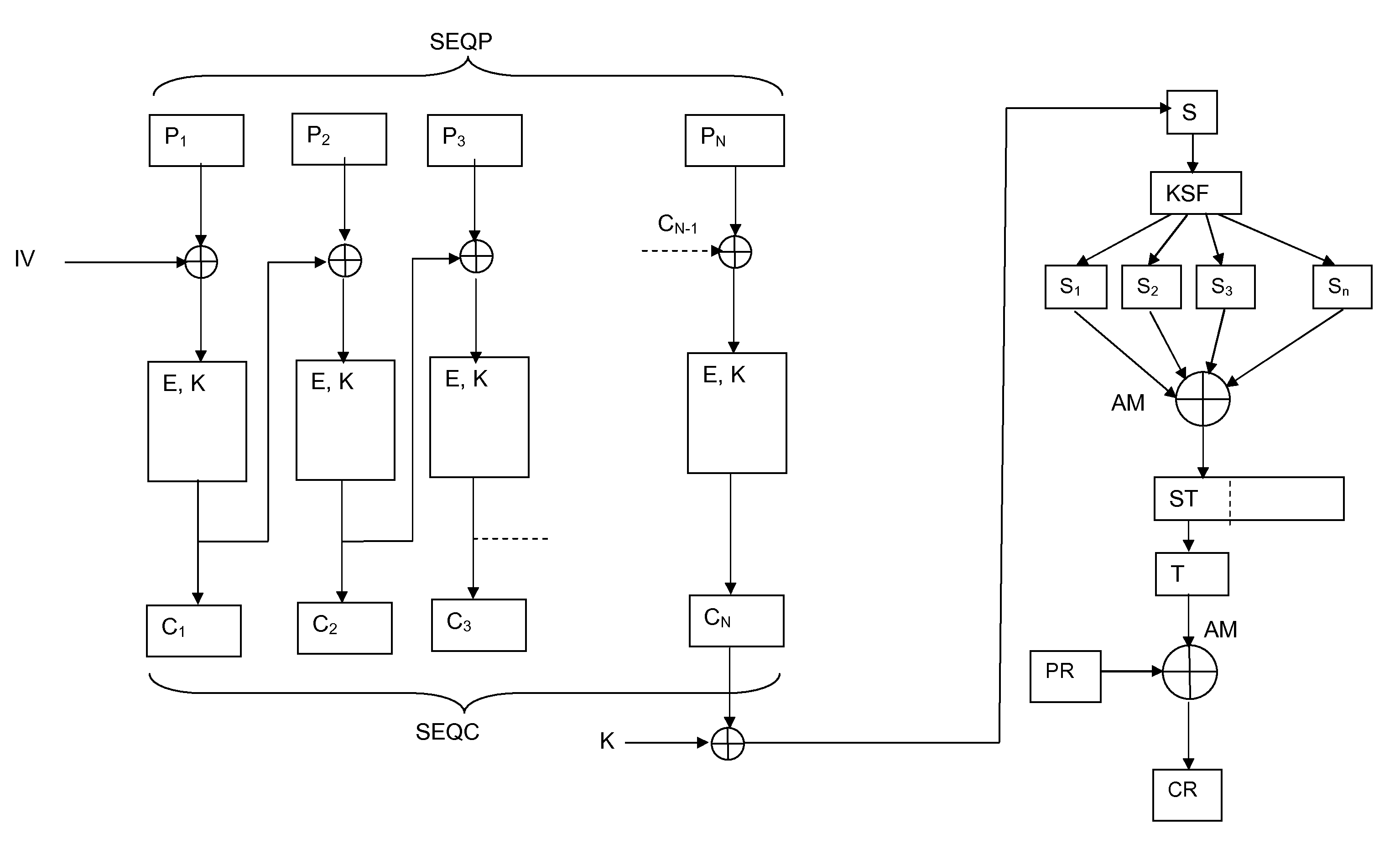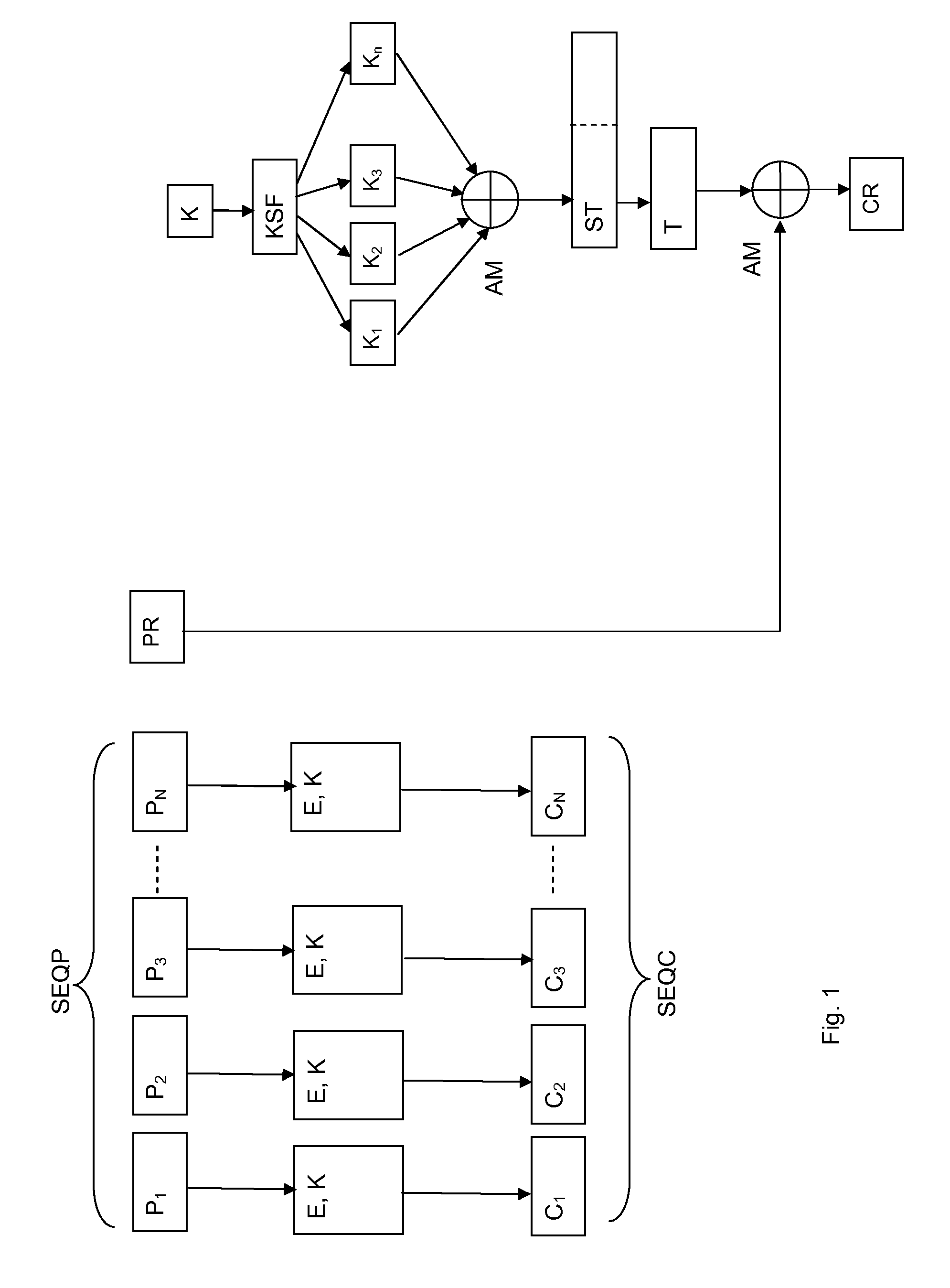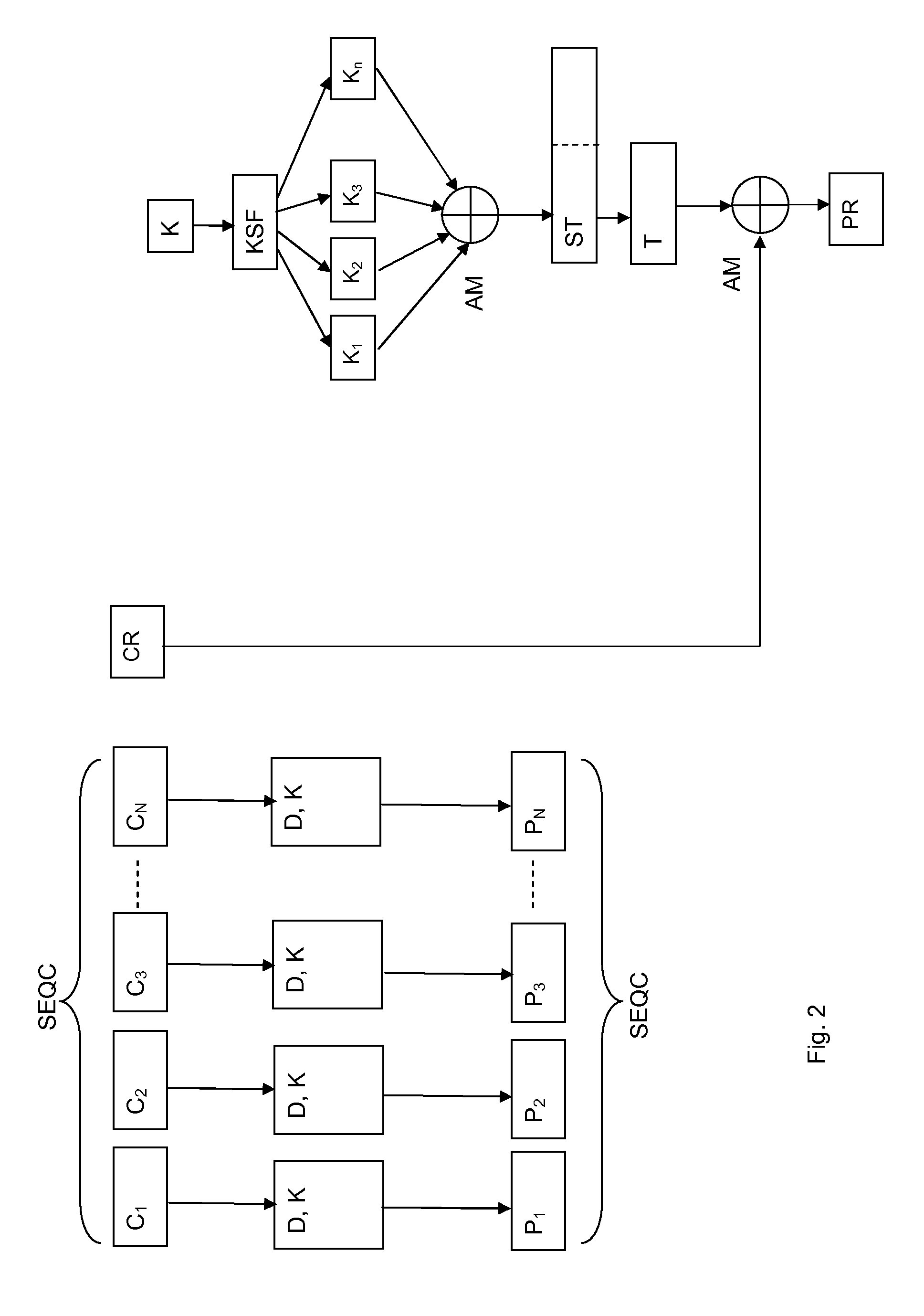Method and device for digital data blocks encryption and decryption
a technology of digital data and encryption, applied in the field of methods and devices for encryption and decryption of digital data, can solve the problems of simple but least secure methods, and achieve the effect of minimizing calculation processing capabilities and acceptable security levels
- Summary
- Abstract
- Description
- Claims
- Application Information
AI Technical Summary
Benefits of technology
Problems solved by technology
Method used
Image
Examples
example
[0070]For example, the method of the invention may be applied by using AES-128 (Advanced Encryption Standard, with blocks of 128 bits) encryption / decryption algorithm in CBC mode with key K and initialization vector IV, when (for example) plaintext blocks are P1, P2 and P3 such that P1 and P2 have a length of 128 bits, and P3 as residual plaintext block with a length of 32 bits, are encrypted as follows[0071]1. Given an initialization vector IV, ciphered blocks of 128 bits are produced as follow:[0072]a. C1=AES-128_Enc(K, P1 XOR IV) and[0073]b. C2=AES-128_Enc(K, P2 XOR C1)[0074]2. A 128 bit string S is formed by XORing the last ciphered block of 128 bits C2 and the key K. The key schedule function KSF of AES-128 algorithm is used to determine the 11 round keys (S1, S2, S3, . . . S11) corresponding to the string S. These 11 round keys of 128 bits strings are XORed together to obtain a resulting string ST=S1⊕S2⊕S3⊕ . . . ⊕S11, and the first 32 bits of the resulting string ST are saved...
PUM
 Login to View More
Login to View More Abstract
Description
Claims
Application Information
 Login to View More
Login to View More - R&D
- Intellectual Property
- Life Sciences
- Materials
- Tech Scout
- Unparalleled Data Quality
- Higher Quality Content
- 60% Fewer Hallucinations
Browse by: Latest US Patents, China's latest patents, Technical Efficacy Thesaurus, Application Domain, Technology Topic, Popular Technical Reports.
© 2025 PatSnap. All rights reserved.Legal|Privacy policy|Modern Slavery Act Transparency Statement|Sitemap|About US| Contact US: help@patsnap.com



